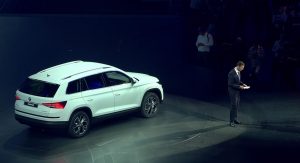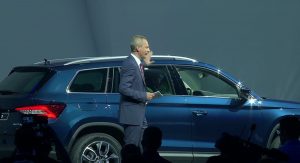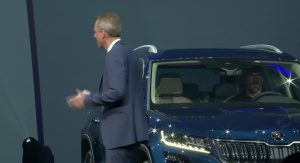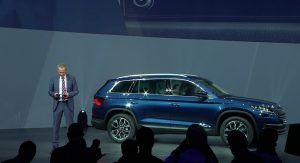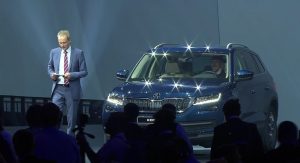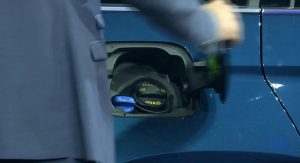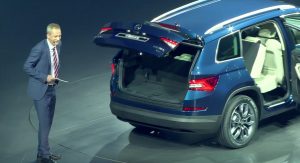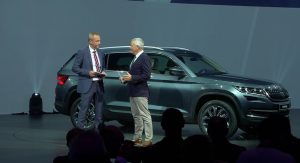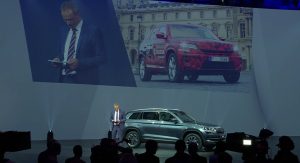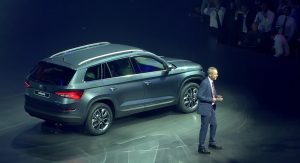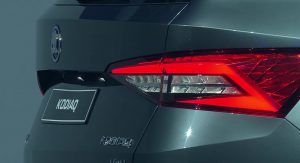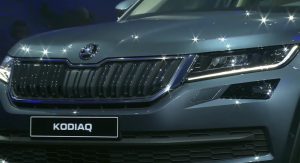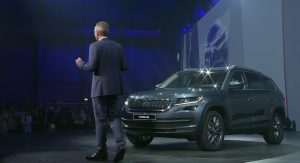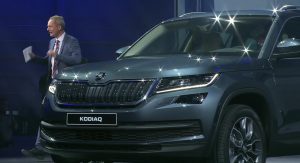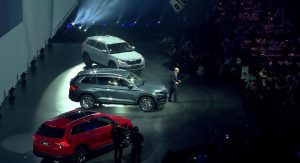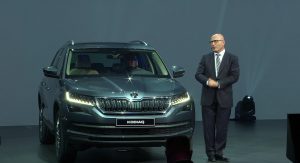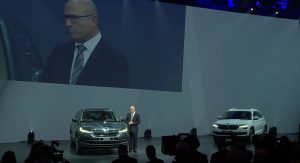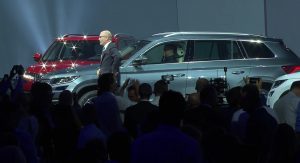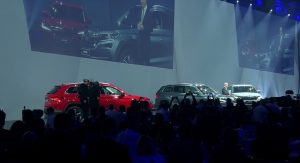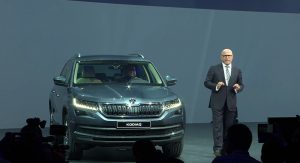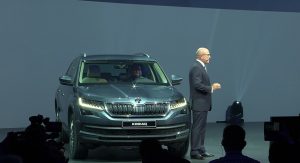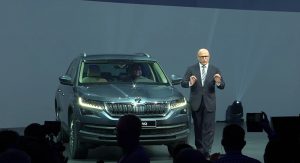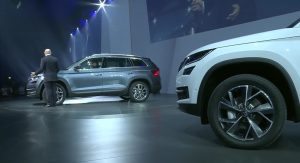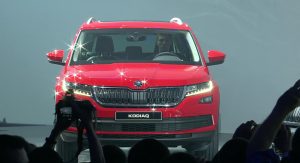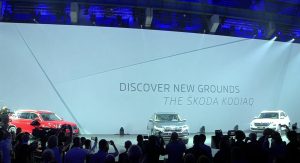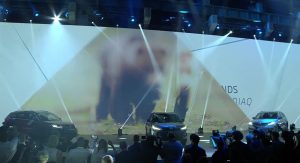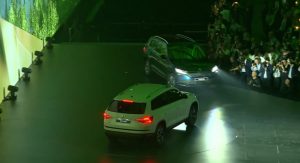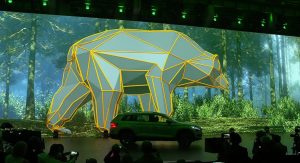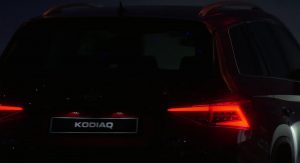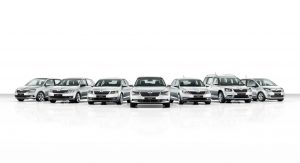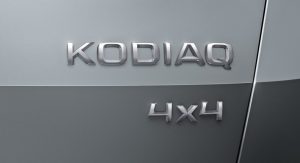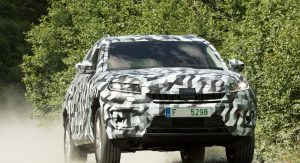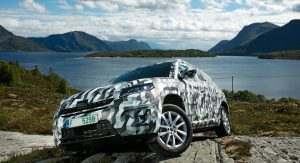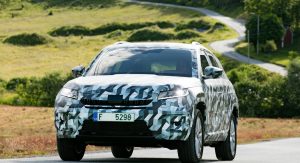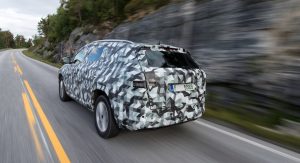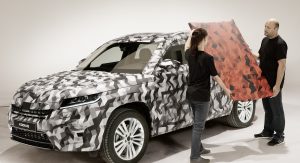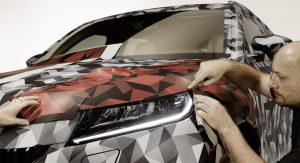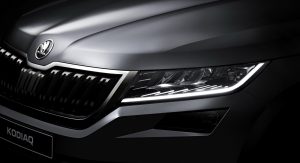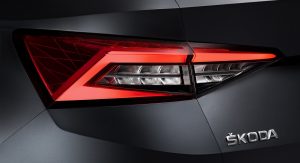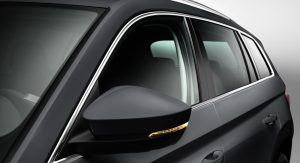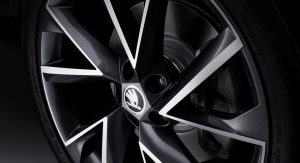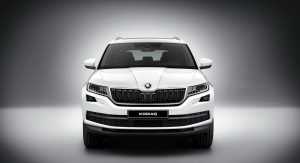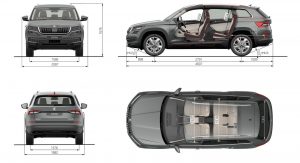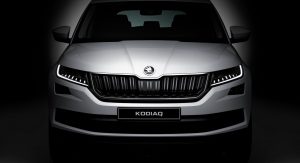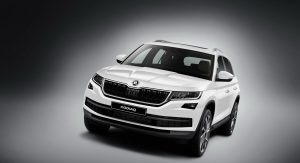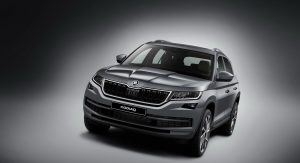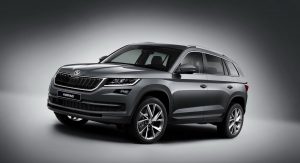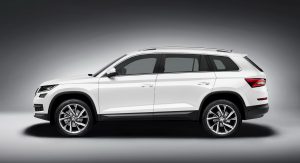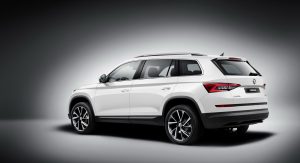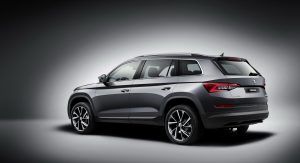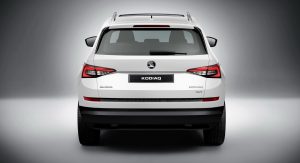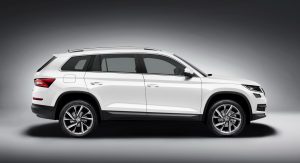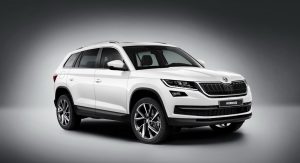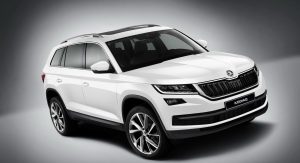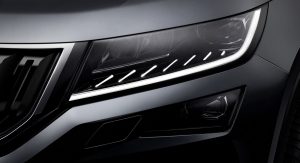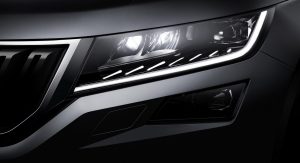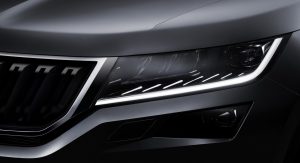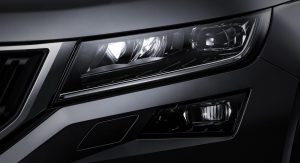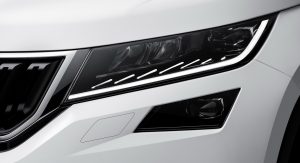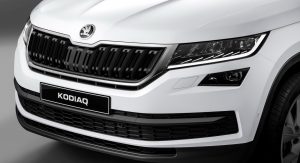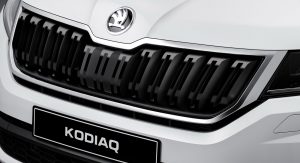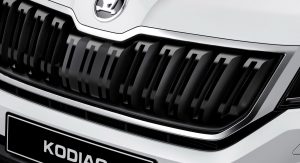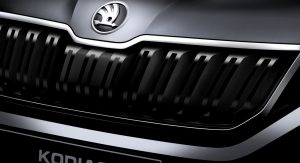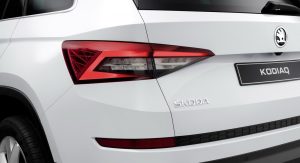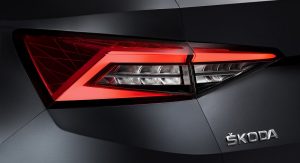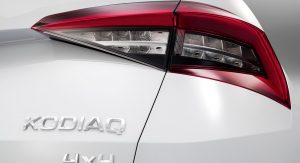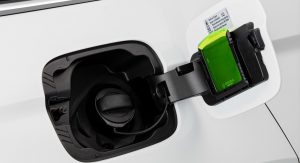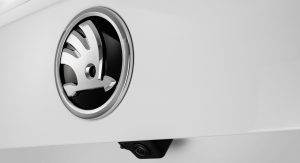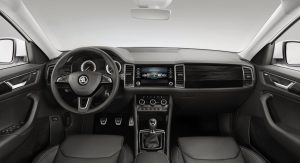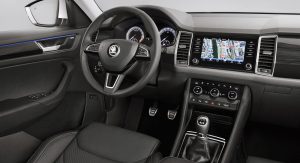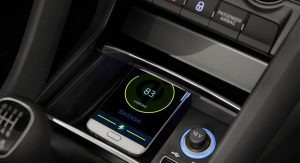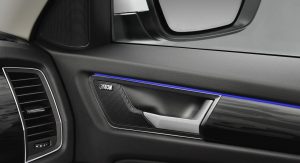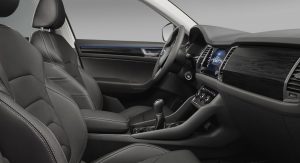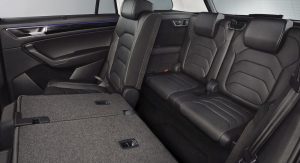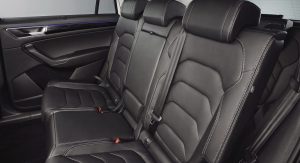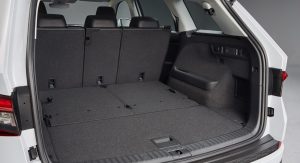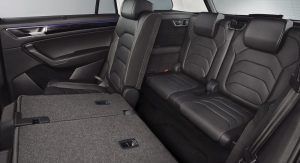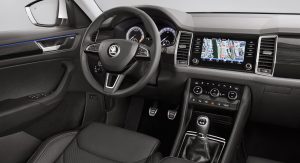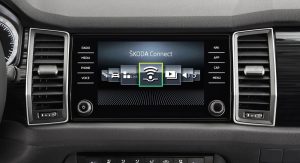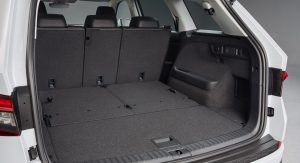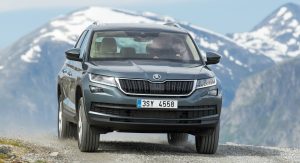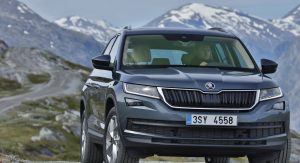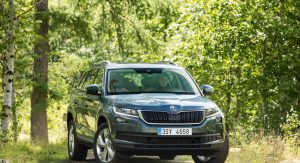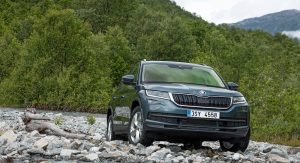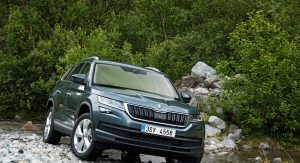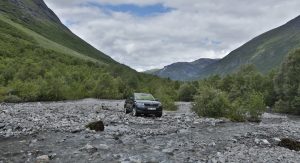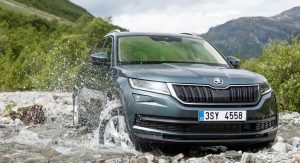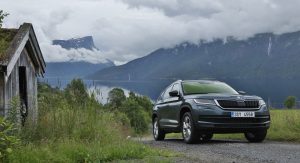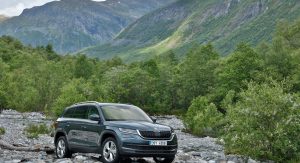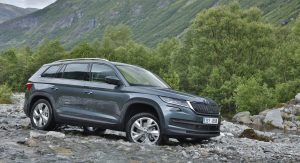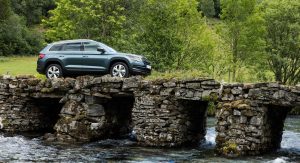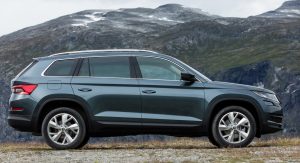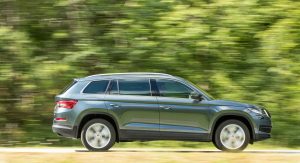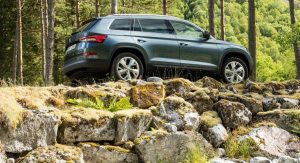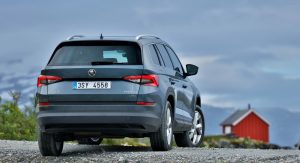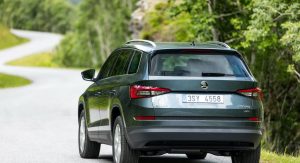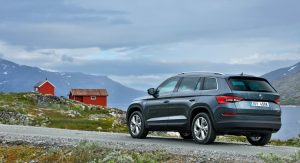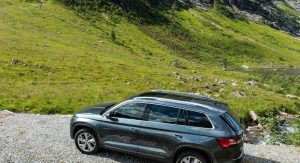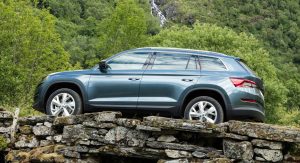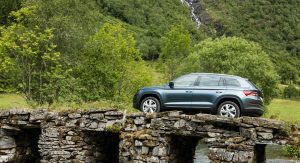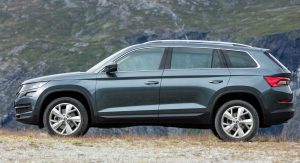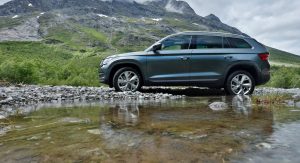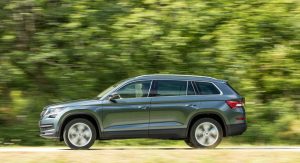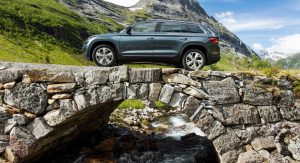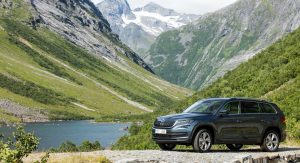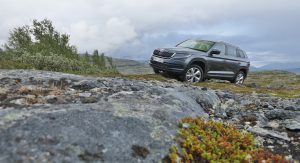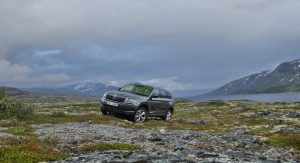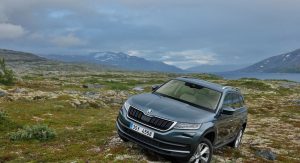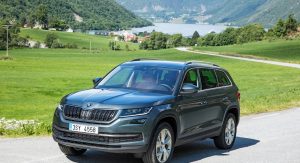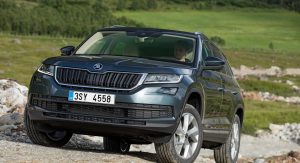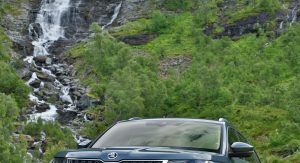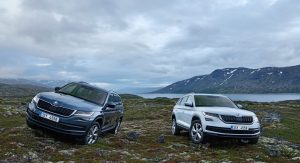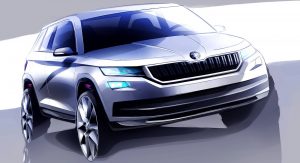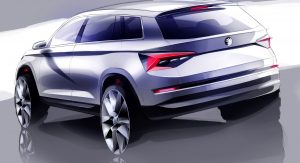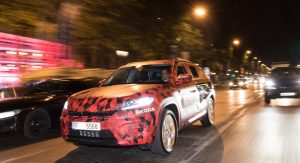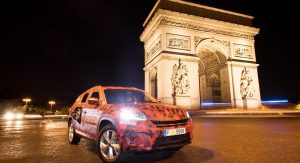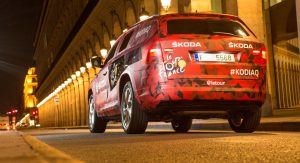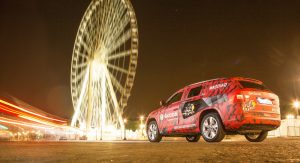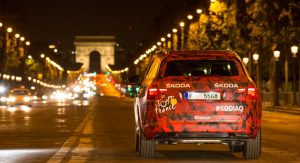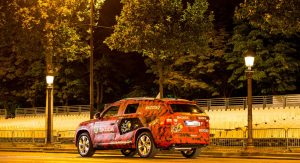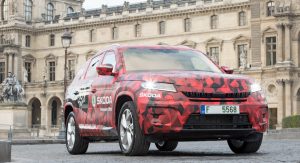Skoda has officially unveiled their all-new Kodiaq during a media event in Germany, with plenty of journalists and guests present on location at Kraftwork Berlin.
Aside from being Skoda’s first-ever large SUV, the Kodiaq, according to the Czech automaker, also comes with the segment’s largest boot, helped in part by the car’s generous overall dimensions of 4.70 meters (15.41 ft) in length. Its wheelbase measures 2,791 mm (109.8 inches).
The best-in-class boot measures from 720 liters (25.4 cu.ft) to 2,065 liters (72.9 cu.ft), and if the optional folding passenger seat is chosen, the Kodiaq can transport items up to 2.80 meters (9.1 feet) long.
The exterior design features a highly recessed shoulder line, a wide three-dimensional radiator grille, narrow headlights and plenty of highly contoured surfaces. At the rear, Skoda used LEDs as standard for the C-shaped taillights, which means that customers can opt for either one of the three available trim levels and still drive off knowing their lights give off the impression of a fancy crystalline structure.
Despite being just 40 mm (1.57 in) longer than the Octavia, the all-new Kodiaq offers a larger-than-average interior for its segment, with a length of 1,793 mm (70.6 in). Elbow room is 1,527 mm (60.1 in) in the front and 1,510 mm (59.4 in) in the rear, whereas head room is 1,020 mm (40.1 in) in the front and 1,014 mm (39.9 in) in the back. Rear legroom measures up to an impressive 104 mm (4.09 in).
The dashboard layout, which we saw yesterday fully exposed, is characterized by bold vertical elements such as the four large air vents. The large touchscreen display splits the instrument panel into two equal sections, one for the driver and one for the passenger.
In terms of comfort, buyers can opt for the heated steering wheel but also the optional tri-zone climate control, heated, ventilated and electronically adjustable front seats, ambient lighting and multiple fabric/leather combinations, which include Alcantara. Further features include the Area View system, Front Assist with City Emergency Brake, the optional Predictive Pedestrian Protection system, Adaptive Cruise Control, Lane Assist, Blind Spot Detect and Rear Traffic Alert.
The Kodiaq is also available with Skoda Connect, integrating Infotainment Online services, Emergency Call (eCall), Remote Access and for the first time, the integration of SmartGate in the SmartLink all-in-one app – alongside Apple CarPlay, Android Auto and MirrorLink. The Swing infotainment system with its 6.5″ touchscreen display comes as standard, however, the optional Bolero high-definition 8″ screen definitely eclipses it in terms of looks and features.
There’s also an optional Phonebox which charges your smartphone inductively using the Qi standard.
Now, since Skoda compared the Kodiaq to a bear many times during its official unveiling in Berlin, it’s time to see what they’ve got powering their first ever large SUV. No fewer than five powertrains (2x TDI, 3x TSI) currently make up the range, with power output ranging from 125 PS (92 kW) to 190 PS (140 kW). All power units feature a Stop-Start system, brake energy recovery and a thermo-management system helping the car achieve better fuel consumption.
The 2.0 TDI unit is available in two versions – a 150 PS & 340 Nm (250 lb-ft) unit and a flagship 190 PS & 400 Nm (295 lb-ft) one. The average consumption of the entry-level TDI is around 5.0 l/100 (56.5 mpg and 131g CO2/km). By comparison, the entry-level 1.4 TSI unit can only manage 6.0 l/100 km (47.1 mpg & 140g CO2/km). Performance-wise, the 190PS unit accelerates the Kodiaq from 0 to 100 km/h (62 mph) in 8.6 seconds and on to a top speed of 130 mph (209 km/h).
The Kodiaq is available with three choices when it comes to various transmission technologies. There’s a 6-speed manual, a 6-speed DSG and a new 7-speed DSG making its debut in a Skoda, which is offered for both top of the range engines. Future customers can get the 1.4 TSI with all-wheel drive and either the 6-speed manual/6-speed DSG, while front-wheel drive is coupled with the 6-speed DSG. Entry-level diesel models with all-wheel drive come with either the 6-speed manual or 7-speed DSG, whereas the front-wheel-drive version is offered solely with the 7-speed DSG.
On the road dynamics should be improved in models using the optional Driving Mode Select, allowing the driver to adjust the operation of the engine and DSG management, power steering, air conditioning and other systems in either Normal, Eco, Sport or Individual setups. All-wheel drive models also come with a Snow mode which adapts ABS, ASR and ACC (if fitted) to slippery road conditions.
Those of you interested in going off-road will be happy to know there’s also a special mode for that, which can be selected at the simple touch of a button, making the chassis, engine management and brakes adjust their operation in order to better suit rough terrain.



![Fully Revealed: Meet Skoda’s All-New Kodiaq 7-Seater SUV [146 Pics]](https://www.carscoops.com/wp-content/uploads/2016/09/Skoa-Kodiaq-Live-CS-3055.jpg)

